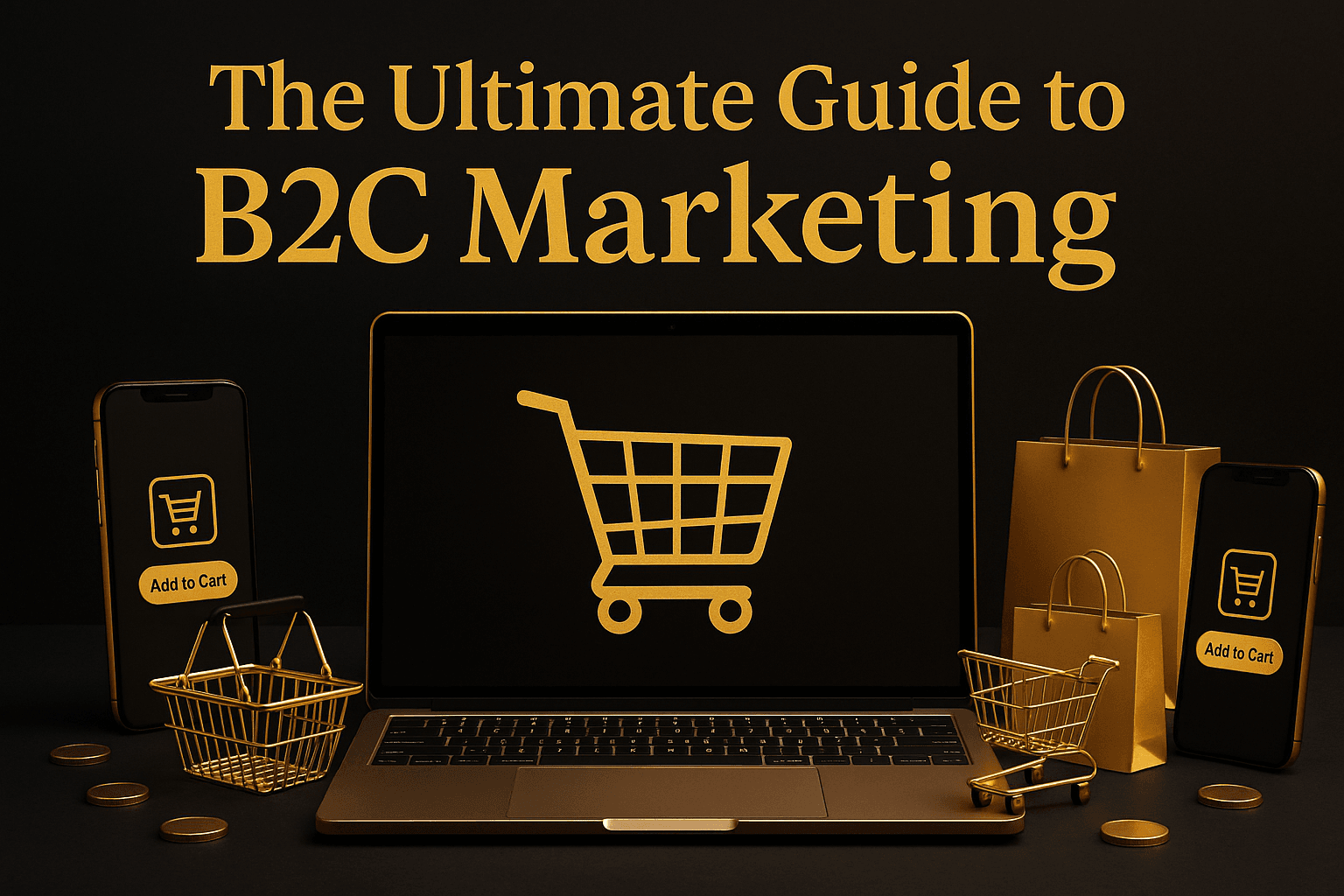Table of Contents
- What is B2C Marketing? (The Human Touch)
- B2C vs B2B: Chalk and Cheese
- The B2C Buyer Journey: Blink and You’ll Miss It
- Social Media: The B2C Playground
- Beyond the Big Three: Other B2C Platforms Worth Your Time
- Influencer Marketing: Your Brand’s Best Friend
- The Art of Emotional Marketing
- Landing Pages That Convert
- Retargeting: The Gentle Reminder
- Email Marketing: Not Dead, Just Different
- Content Marketing for B2C: Entertain and Inspire
- Measuring What Matters
- Customer Experience: Beyond the Sale
- B2C Marketing Best Practices (Non-Negotiables)
- Common B2C Marketing Mistakes
- The Future of B2C: What’s Next?
- Real Success Stories (Names Changed!)
- Your B2C Marketing Checklist
- Connection Wins
Right, let’s talk B2C marketing. If B2B is a chess match, B2C is more like speed dating—quick connections, gut feelings, and, if you’re lucky, love at first sight (or at least first click).
After years helping brands connect with consumers and e-commerce marketing, I can say this: B2C marketing is part science, part art, and just a little bit of magic. One minute you’re crafting the perfect Instagram post; the next, you’re watching your retargeting campaign convert at 2am because someone couldn’t sleep and decided they absolutely needed those noise-cancelling headphones.
What is B2C Marketing? (The Human Touch)
B2C marketing (Business-to-Consumer) is the art and science of selling products or services directly to individual consumers. Unlike its buttoned-up cousin B2B, B2C is all about emotions, impulses, and making people feel something—excitement, FOMO (fear of missing out), or just the pure joy of finding exactly what they wanted.
Think about your last online purchase. Did you spend six months evaluating suppliers? Did you need approval from a committee? Almost certainly not. You saw something, you wanted it, you bought it. That’s B2C digital marketing.
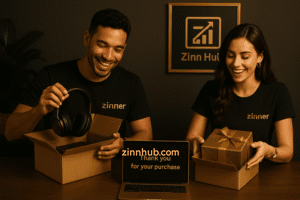
B2C vs B2B: Chalk and Cheese
If you’ve just read my B2B guide and thought, “I’ll just use the same approach for consumers,” think again. B2C is a completely different beast.
B2C Marketing:
- Emotional decisions (“This will make me happy/cool/comfortable”)
- Individual buyers with their own money
- Sales cycles in minutes or days
- Instagram, TikTok, and wherever else people scroll
- “Add to basket” is the goal
B2B Marketing:
- Logical decisions (“This will save us money/time/resources”)
- Committees and procurement processes
- Sales cycles in months or years
- LinkedIn and trade publications
- “Book a demo” is just the beginning
True story: I once tried using B2B tactics for a fashion brand. Sent out a whitepaper about “The ROI of Statement Earrings.” No-one downloaded it. Lesson learned.
The B2C Buyer Journey: Blink and You’ll Miss It
Discovery:
Ooh, what’s that?
- Scrolling social media
- Seeing an influencer’s post
- Served the perfect ad
- Recommendations from friends
Consideration:
- Quick Google search
- Reading reviews
- Checking prices
- Maybe sleeping on it (but probably not)
Purchase:
- One-click checkout
- Apple Pay/Google Pay
- Already imagining the unboxing
Post-Purchase:
- Unboxing experience
- Sharing on social media
- Writing a review
- Joining a loyalty programme
The whole journey can happen in under 10 minutes. I’ve genuinely bought things while waiting for my coffee. That’s the speed we’re talking about.
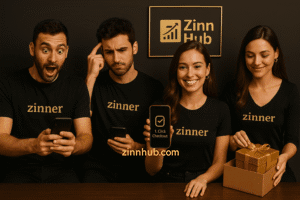
Social Media: The B2C Playground
If LinkedIn is the B2B boardroom, Instagram, TikTok, and Facebook are B2C’s party venues. You need to know how to work each room.
Instagram:
The visual playground. Your product needs to look good enough to eat (even if it’s a handbag).
- Beautiful product shots
- User-generated content
- Stories with polls and questions
- Reels (yes, sometimes even dancing)
- Shoppable posts
Pro tip: The best time I ever posted was Sunday evening. Everyone’s doom-scrolling before Monday, cards at the ready.
TikTok:
The wild card. Authenticity wins over polish.
- Jump on trends—quickly
- Behind-the-scenes content
- Humour and relatability
- Micro-influencers who genuinely use your stuff
I watched a small candle brand go from 100 to 10,000 orders because someone made their product “core” to a trending video.

Facebook:
Don’t count it out. Yes, your mum and her bingo friends are on Facebook, but they have credit cards.
- Pinpoint-targeted ads (the targeting is second to none)
- Facebook Shops
- Community groups
- Live shopping events
- Retargeting
👉 Read more about Facebook marketing
👉 Read more about Social Media marketing
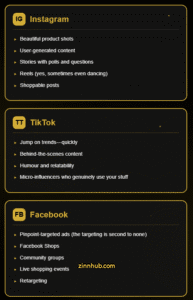
Beyond the Big Three: Other B2C Platforms Worth Your Time
Right, so you’ve mastered Instagram, TikTok, and Facebook. Brilliant. But here’s the thing—your customers aren’t just scrolling through those three apps. They’re everywhere, and sometimes the “secondary” platforms deliver primary results.
Think of these as your supporting cast. You don’t need to be on all of them (please don’t try), but one or two might be perfect for your brand. Test small, measure everything, and double down on what works.
WhatsApp Business
The dark horse of B2C marketing. 2 billion users, 98% open rates, and genuine one-to-one connections.
- Order updates that actually get read
- VIP customer groups (exclusivity sells)
- Abandoned basket nudges (gentler than email)
- Customer service that feels personal
I’ve seen a boutique triple their repeat purchase rate just by creating a WhatsApp VIP list. “New stock just arrived, thought you’d like first dibs 👀”—simple, effective, personal.
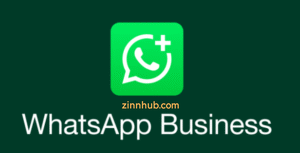
Not just for wedding planning and recipe hoarding anymore.
- 400 million monthly users ready to buy
- Amazing for discovery (people go there to find new things)
- Longer content lifespan than other platforms
- Perfect for fashion, home, beauty, food
Pro tip: Pinterest users plan ahead. Start pinning Christmas content in September. Yes, really.
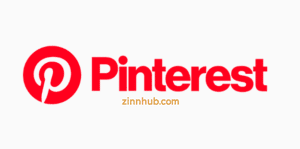
SMS Marketing
Old school? Maybe. Effective? Absolutely.
- 98% open rate (email marketers would sell their souls for this)
- Perfect for flash sales and time-sensitive offers
- Works brilliantly with loyalty programmes
- Just don’t overdo it—nobody wants 10 texts a day
👉 Read more about SMS Marketing
YouTube (Beyond Just Ads)
The world’s second-largest search engine. People literally search “best [your product] 2024” all day long.
- Product reviews and unboxings
- How-to content that showcases your products
- YouTube Shorts (TikTok’s rival)
- Live shopping events

Tread carefully here. Redditors can smell marketing from a mile away.
- Genuine participation in relevant communities
- AMAs if you’ve got an interesting founder story
- Incredible for market research
- Organic mentions worth their weight in gold
One bad campaign on Reddit and you’re a meme. One good organic mention in the right subreddit? Christmas come early.
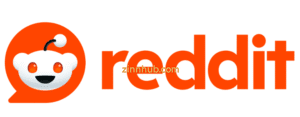
Twitter/X
Yes, it’s been chaotic lately. But it’s still brilliant for:
- Real-time customer service
- Jumping on trending topics
- Building brand personality
- B2C brands with opinions (carefully)

Emerging Spaces
Keep an eye on:
- BeReal: Authenticity on steroids
- Discord: Not just for gamers anymore
- Twitch: Live shopping meets entertainment
- Spotify: Podcast ads and playlist sponsorships
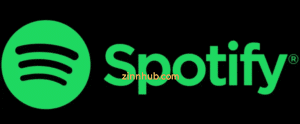
The Platform Reality Check
Here’s what nobody tells you: You can’t be everywhere, and you shouldn’t try. I once watched a brand spread themselves across 12 platforms. Result? Mediocre everywhere, exceptional nowhere.
Pick platforms based on:
- Where your customers actually are (not where you think they should be)
- What you can genuinely commit to
- Where your content naturally fits
- Your actual resources (time, money, people)
I’ve said it a thousand times: “Better to absolutely nail two platforms than to half-heartedly post on six.”
Influencer Marketing: Your Brand’s Best Friend
Influencers aren’t just people with followers—they’re bridges of trust between you and your next customer. Picking the right ones is an art.
Mega-influencers (1M+):
Huge reach, expensive, often less engagement per follower.
Micro-influencers (10K-100K):
Niche audiences, higher engagement, more affordable, better ROI for many brands.
Nano-influencers (Under 10K):
Super authentic, tight communities, very affordable—especially powerful for local brands.
I once worked with a nano-influencer who sold more skincare than a celebrity. Why? Her 8,000 followers trusted her recommendations implicitly. Authenticity beats reach, every time.
👉 Read more about Influencer Marketing
The Art of Emotional Marketing
B2C is about feelings, not features. You’re selling dreams, solutions, and identity.
- FOMO (fear of missing out): Limited editions, flash sales, “only 3 left”, countdowns.
- Belonging: “Join 10,000 happy customers”, community hashtags, brand tribes.
- Instant gratification: Same-day delivery, “buy now, pay later”, free shipping, easy returns.
- Aspiration: Lifestyle imagery, success stories, celebrity or expert associations.
Landing Pages That Convert
You have about three seconds to convince a visitor to stay. No pressure.
👉 Read more about E-commerce marketing
Above-the-fold must-haves:
- Clear value proposition
- Striking hero image or video
- One clear CTA
- Trust signals (reviews, ratings, media logos)
The psychology bits:
- Social proof (“12,847 bought this”)
- Urgency (“Sale ends in 2 hours”)
- Risk reversal (“30-day money-back guarantee”)
- Benefit-focused copy (not features!)
I once swapped “Submit” for “Get My Discount”—conversions jumped 34%. Words matter.
Retargeting: The Gentle Reminder
Someone visited but didn’t buy? Retargeting is your friend—but don’t be creepy.
- Dynamic ads showing the products they viewed
- Follow across platforms (respectfully!)
- Timely incentives to return
- Frequency caps—nobody wants to see your ad 47 times a day
Fact: According to Google, retargeting ads are up to 10x more likely to convert than standard display ads (source: Think with Google, 2023).
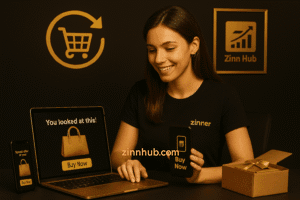
Email Marketing: Not Dead, Just Different
B2C email is about driving immediate action, not nurturing leads for months.
Welcome series:
- Welcome + discount code
- Best sellers
- Social proof
- Clear next step
Abandoned cart:
- Reminder (2 hours)
- Urgency (24 hours)
- Last chance incentive (72 hours)
Campaign emails:
- Standout subject lines
- Mobile-first design
- One clear message
- Prominent CTA
Subject line I’m most proud of: “Your basket misses you 💔”—67% open rate. Sometimes simple works best.
👉 Read more about Email Marketing
Content Marketing for B2C: Entertain and Inspire
Nobody wants to read your 5,000-word treatise on socks. Keep it light, useful, and shareable.
- How-to videos
- Style guides
- User stories
- Behind-the-scenes
- Gift guides
- Quick tips
- Memes (yes, really)
By platform:
- Instagram – visuals and stories
- TikTok – trends and authenticity
- YouTube – tutorials and reviews
- Pinterest – inspiration boards
- Twitter/X – quick tips and news
- Reddit – discussions and AMAs
- WhatsApp – exclusive content
- Blog – SEO guides
👉 Read more about Content Marketing Tools
Measuring What Matters
In B2C, “vanity metrics” sometimes matter.
Social
Engagement rate, reach, saves, shares, follower growth, clicks.
Sales
Conversion rate, average order value (AOV), customer acquisition cost (CAC), return on ad spend (ROAS), lifetime value (LTV).
Golden rule
If your CAC is more than 30% of LTV, rethink your acquisition strategy.
Customer Experience: Beyond the Sale
B2C doesn’t end at checkout. What happens after matters just as much.
Unboxing:
Beautiful packaging, personal touches, “Instagrammable” moments
Customer service:
Live chat, speedy replies, easy returns, proactive updates.
Loyalty programmes:
Points, VIP tiers, exclusive access, birthday rewards.
True story: A handwritten note in my parcel kept me loyal for years. Sometimes, it’s the little things.
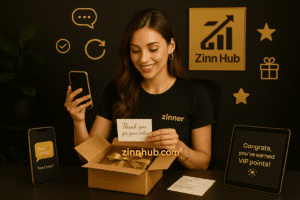
B2C Marketing Best Practices (Non-Negotiables)
- Mobile-first, always
- Speed matters—every second of load time loses conversions
- A/B test everything—copy, colour, emoji, you name it
- Stay human—real people behind every purchase
- Meet customers where they are
- Reduce friction at every step
- Build a community, not just a customer list
- Respond quickly—speed wins hearts
- Stay current—trends move fast, move faster
Common B2C Marketing Mistakes
- Overcomplicating the journey: I once made a five-step checkout. Abandonment: 78%. Now it’s one click.
- Ignoring mobile: Designed a beautiful desktop site. 80% of traffic was mobile. Big mistake.
- Being too salesy: No one likes the pushy approach. Build a relationship first.
- Neglecting loyal customers: Acquisition is sexy, but retention pays the bills.
- Chasing every trend: Not every brand needs to be everywhere. Choose your battles.
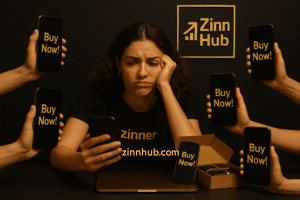
The Future of B2C: What’s Next?
- Live shopping: Huge in Asia, now growing in the UK and Europe.
- AR/VR experiences: Try before you buy—virtually. Big for fashion and homeware.
- Voice commerce: “Alexa, order my usual” is becoming more, well, usual.
- Sustainability focus: More consumers care how you do business, not just what you sell.
- AI personalisation: Every journey feels unique (if you use data responsibly).
Real Success Stories (Names Changed!)
- The Startup: Small jewellery brand, used only micro-influencers. From £10k to £1m in 18 months. Authenticity and beautiful unboxing were the secrets.
- The Pivot: Gym wear brand shifted from Facebook to TikTok—sales up 400%. Their audience had already moved; they caught up.
- The Comeback: Established brand lagging behind. Loyalty programme with exclusive drops boosted retention by 60%.
Your B2C Marketing Checklist
- Know your audience inside out
- Own 2–3 social platforms (do them well)
- Create “thumb-stopping” content
- Build an influencer strategy
- Make everything mobile-friendly
- Set up smart retargeting
- Design high-converting landing pages
- Craft irresistible emails
- Focus on customer experience
- Measure, learn, and adapt
Connection Wins
B2C marketing isn’t rocket science, but it’s not finger painting either. It’s about understanding what makes people tick, click, and buy.
Winners aren’t always the ones with the biggest budgets (though it helps). They’re the ones who make genuine connections, solve real problems, and make life a little better (or at least more fun).
Behind every conversion is a real person who chose you. Honour that choice with great products, brilliant experiences, and marketing that feels like a service—not just a sales pitch.
Now, get out there and sell something beautiful. Your future customers are scrolling, waiting to fall in love with what you’ve built.
Ready to swap B2C war stories or learn new tricks? Join the conversation at Zinn Hub—there’s always room for another marketer who knows business is personal.

